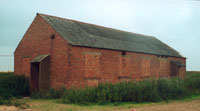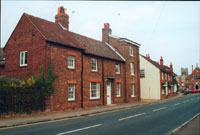|
 |
 |
 |
 |
 |
 |
 |
 |
 |
 |
 |
 |
 |
 |
 |
 |
SPECIAL OPERATIONS EXECUTIVE
|
|
|
|
 |
All the studios were supposed to be soundproof but through the thin back wall of the open fireplace the French Socialists heard the opposition in full flow. At once they all resigned! Each team was accompanied to Simpsons by a censor, usually the housemaster or the P.I.D. head of the unit. At Simpsons he was responsible for ensuring that the recorded material tallied with the agreed scripts and as censor he had to sign the final Layout Sheet, a duty he sometimes delegated to a secretary or British national. When required, a Research Unit would be able to transmit live from Simpsons but the rule was that permission had to be obtained from the Director Country and Brigadier Parry, who was responsible for the necessary land lines. Also permission was needed from the Director of the Region in which the R.U. was involved. Yet in the summer of 1941 difficulties in obtaining a sufficient number of records, due to shipping losses in the Atlantic, meant that for awhile all R.U. broadcasts had to be made live and it was a tribute to the organisational abilities that this was successfully |
|
 |
|
|
|
|
|
|
|
carried out. The teams were always transported to Simpsons by car and they were never allowed to go on foot in case - with this imprecise timing - they arrived as another R.U. was leaving. The cars were driven by especially selected team of drivers, chosen both for their integrity and their local knowledge and they were provided with passes to Simpsons by P.I.D. and to the transmitters by Brigadier Parry. The drivers were responsible for carrying the |
|
 |
 |
|
 |
|
Gawcott Transmitting Station |
|
|
 |
recorded programmes to the transmitters, packed in specially made wooden boxes. Each programme had a Lay-out Sheet, bearing full instructions as to the times of the transmissions and the frequencies used and after each transmission each card was initialled by the transmitter engineer.
The car runs were scheduled to reach the transmitter thirty minutes before the time of transmission but weather and recording difficulties sometimes much reduced this. Even so, during the five years of the R.U. project no transmissions were missed through any failure of the transport although during one winter period an additional transmitter in the Cotswolds had to be used. Before the R.U.s were started, a decision had been made to use recordings, since this allowed both effective censorship and a measure of trial and error. Many R.U.s were operating 24 hours a day, simultaneously from more than one transmitter and the impression was meant to be |
|
 |
|
|
|
|
|
|
|
that the broadcasts were live. Sometimes, however, too shallow a cut by the recordist at Simpsons meant that the arm would jump or the groove repeat. Also, in warm weather ‘ghosting’ would occur whereby because of the softness of the base, speech on one groove appeared faintly on the next.
The discs were capable of recording a fifteen minute programme but this was rarely used because the last portion of the recording, the |
|
 |
 |
|
 |
|
|
Potsgrove Transmitting Station |
|
|
|
 |
outside edge, was of a poorer quality. More usually the recording would be of twelve and a half minutes whilst for longer transmissions, several records would be used and fused into each other. The head of S.O.E., Hugh Dalton, came down on occasions to witness the work of his SO1 propagandists but his habit of calling for ‘volunteers’, to accompany him on Sunday morning walks, usually caused many of the staff to swiftly find other duties, when they heard his booming voice! His Principal Private Secretary was Hugh Gaitskell, the future Prime Minister and he exercised some supervision of the Woburn operations in Dalton’s absence. For his local accommodation he was given the tenancy of a Georgian house at No. 6 Leighton Street, Woburn.
The Research Units in operation during the S.O.1 period were:- |
|
 |
 |
|
|
|
|
|
|
 |
B1 Radio Vrijschutter, 4.7.41 - 8.6.44
D1 Radio Denmark, 432 programmes, 16.2.41 - 27.4.42
F1 Radio Inconnue, 1145 programmes, 15.11.40 - 10.1.44. Supposedly broadcasting from Paris, of subversive content to promote passive resistance. It was attached to Petain and Vichy and was kept secret from the Free french and de Gaulle.
F2 Radio Travail, 551 programmes, 17.11.40 - 21.5.42
F3 La France Catholique, 2.7.41 - 15.5.44. |
|
 |
|
|
|
6 Leighton Street, Woburn |
|
|
|
|
|
|
|
|
|
 |
The speaker was Father Lagrave, a French priest, who encouraged resistance amongst Catholics in France. The Germans alleged that the station was broadcast from the Vatican, which the Vatican never denied. ‘A male voice, as soft as honey, preaches a sermon in which the German people are called upon to oppose the anti-Christ’ and the ‘heathen Nazi’. F4 Radio Gaulle, 426 programmes, 25.8.41 - 15.11.42. The speakers were members of the Free French, with a content intended to train the resistance groups.
G1 Das Wahre Deutschland, 294 programmes, 26.5.40 - 15.3.41
G2 Sender der Europaischen Revolution, 582 programmes, 7.10.40 - 22.6.42
G3 Gustav Siegfried Eins, 693 programmes, 23,5,41 - 18.11.43
H1 Radio Flitspuit, 286 programmes, 17.7.41 - 18.8.42
N1 Norwegian Freedom, 609 programmes, 5.2.41 - 16.12.42
R1 Frats Romun, 974 programmes, 10.11.40 - 20.7.43
Radio Liberta, 168 programmes, 8.6.41 - 27.11.41
RD Radio Nazdar, 65 programmes, 16.3.41 - 28.9.41
W1 Radio Italia, 545 programmes, 16.11.40 - 15.5.42
?? Italian Socialist, 8 programmes, 1.2.41 - 6.3.41
Y1 Radio Zrinski, 906 programmes, 31.5.41 - 1.12.43
Y2 Radio Shumadia, 811 programmes, 7.8.41 - 19.11.43
Y3 Radio Triglav, 211 programmes, 23.8.41 - 9.4.42
|
|
 |
|
|
|
|
|
|
|
|
|
|
|
 |
|
 |
|
|
|
|
|
|
|
|
Back to top
|
|
|
|



